“Darling, I don’t know if it’s me or the wine talking, but I think we should open another bottle of wine.”
Don Day did take a year of economics in college. And, though he read a lot more Patti Smith than Adam Smith, he did understand the law of supply and demand. When the cupboard is empty, you buy more wine. When the cupboard is full, you drink more wine.
In Toronto, Don Day’s wine cupboard is almost always full to the brim. Because a two block walk from Don Day’s Toronto house is Canada’s largest wine store. And Don Day can be a very impulsive person when it is the demon grape that is tempting him.
In San Miguel de Allende, Don Day does most of his wine shopping at La Europea. And in San Miguel, Don Day’s cupboard is almost always close to but never quite empty. For there just isn’t that much low hanging fruit to be picked in La Europea.
There are exceptions to that rule, however. In a couple of categories, La Europea has a supply that can satisfy Don Day’s most demanding requirements. The geographic category is South America and, more specifically Argentina. The grape color is red and more specifically Cabernet Sauvignon. At last count there were fourteen different Argentinean Cabs in stock at La Europea that Don Day would welcome to his cupboard.
Argentina is one of those places that, if there was a Billboard chart of up-and-coming wine regions, it would have a bullet beside it. It’s definitely one of the fastest growing wine producing countries and total production now ranks fifth in the world. Argentina’s always been big on wine but Don Day hasn’t always been big on Argentinean wines. For many years, the big grape in Argentina was Criolla, a grape you may never have heard of and, even if you haven’t heard of or tasted it, it still should be removed from any bucket list. It’s a grape used to make a wine that Argentinians call vino de mesa. It’s a wine that Don Day calls plink plonk (it’s a similar color to rose and a reminder to me of those cloying Portuguese roses from the Sixties that, try as I may to forget them, still bring back joyful memories). In most recent numbers, Criolla still represented 44% of the wine produced in Argentina but other, more desirable grapes are catching up. Malbec, the grape you (and until recently Don Day) might have guessed would be number one does sit at number two and the number of hectares planted has grown from 10,500 to 21,200. Bonarda is third at 17,200, followed by Cabernet Sauvignon at 16,200. But the growth in Cabernet has been phenomenal. Up 600% from just 2,300 hectares 15 years ago.
Cabernet Sauvignon is, by far, the world’s most esteemed red grape and it’s not all that difficult to grow. It’s adaptable to many climates and many soils. It’s not difficult, either, to make a decent wine from Cabernet Sauvignon grapes. But it is very difficult to make a great wine out of them.
The style of wine produced from the grape has many regional differences based on the amount of limestone in the soil, the average daily and nightly temperatures, the amount of humidity, frequency of rain, and how early (or late) in the season the grapes are picked.
Cabernet Sauvignon is one of the most tannic of all wines and to make a good wine from the grape, those tannins must be softened. Throughout the world, wherever Cabernet Sauvignon is produced that reduction of the tannins is almost always done by aging it in oak barrels.
In Cabernet Sauvignon’s birthplace, the southwest of France, the tannins are also softened by blending the grape with other varieties, most often Merlot and Cabernet Franc. The result is a style that is much more in favor with oenophiles than social wine drinkers with flavors such as green pepper, mint and cedar coming through as well as the primary taste of black currants.
In other parts of the world, often where days are much warmer and where the grapes are left on the wine for a couple of weeks longer, the taste is much more fruity and full with the taste of plums and cherries coming through and the word jammy often used to describe the flavor. In still other parts of the world, the taste of olives, eucalyptus or menthol often add to the intricacies.
Almost all of Argentina’s Cabernet Sauvignon is grown in the state of Mendoza (the deep red on the map), in the dramatically scenic valleys and foothills of the Andes that separate the country from Chile. How far north or south the vineyards are and at what elevation they’re situated seem to have the biggest impact on the nuances of the wines. Almost every style is represented in the wines with some having the greeniness of Bordeaux, others having the jamminess of Australia and others having the peppery fruitiness of California.
Don Day has never found anything on the labels that is a good indicator of what style of Cabernet Sauvignon you’re going to get so Don Day has had to do a lot of sampling. Last night, Don Day’s friend Ricardo’s arm was given the mighty corkscrew twist to persuade him to help me as we opened, poured, swirled, sipped and guzzled our way through more than a few bottles of Argentinian Cabs. Here’s the best that we found (the prices are La Europea‘s) and keep in mind when Don Day is scoring wines, value is always the prime criteria. The order is from worst to first.
6. Ultra Kaiken $358 pesos
This is one of the priciest Argentinean Cabs on La Europea‘s list and just isn’t worth it. There are hints of tobacco, raisins and coffee complimenting the fruit but you’d have to be very sophisticated oenophile to appreciate these nuances and consider the wine worth the money. Don Day has a hard time getting his hands in his pockets when he has to pull out more than $200 pesos for a bottle of wine and this one just has his hands scratching his head.
5. Pascual Toso Reserva $334 pesos (on special at $223 pesos at time of writing)
Yes, there’s a little more complexity than the standard issue Pascual Toso (read on for that) but, again, not enough to warrant more than $100 pesos extra from Don Day’s shallow pockets. In fact, Don Day did a little side by side a while back and actually preferred the everyday Pascual Toso to the reserva.
4. Kaiken Reserva $172 pesos
Now you’re talking. At less than half the price of Kaiken Ultra, this low end offering from the same winery delivers a big basket of fruit with blackberries joining red currants in the flavor. Not a lot of sophistication in the taste but for those who like a full wallop of jam, this is a good choice.
3. Pascual Toso $214 pesos (on special for $140 pesos at time of writing)
This is Don Day’s go to, everyday Argentinean Cab. I’ve been drinking it for years and will probably drink a lot more cases before I wear out my corkscrew. There’s raspberry as well as blackcurrants in the fruit along with hints of vanilla and chocolate. For those who like a California Cabernet Sauvignon, this is very similar and very available in San Miguel de Allende.
For some reason, there are a lot of the same wines that go on sale at La Europea over and over again. When Pascual Toso Cabernet Sauvignon is down at $140 pesos, it’s a buy by the case for Don Day.
2. Catena $298 pesos
This was number one with Don Day at our little Argentinean Cabernet tasting. But not with anyone else. It’s over Don Day’s $200 pesos low ceiling, so you must know I really liked it. Usually I don’t read all the gobbledygook you find on winery’s websites but I thought the following quote about the different vineyards at different altitudes helped explain how Catena comes closest to a Bordeaux and why there are so many different styles in Argentina:
“At different altitudes, the family’s Cabernet Sauvignon vineyards express a unique profile of aromas and flavors: the black currant and cassis fruit flavors and ripe, sweet tannins of the La Pirámide vineyard (3117 ft elevation); the spicy aromatics and pepper notes of the Domingo vineyard (3675 ft elevation); the finely grained tannins of the Altamira in La Consulta vineyard (3593 ft elevation); the minerality and notes of eucalyptus of the Adrianna vineyard (4757 ft). The blend of these components creates a wine of unique character that has balance, concentration and a strong varietal identity.”
Don Day thinks the addition of 3% Cabernet Franc and 2% Petit Verdot also had a lot to do with bringing out the hints of coffee and chocolate and that greeniness that comes with certain styles of Cabernet Sauvignon. Catena is one of the few Argentinean producers that blends small quantities of other grapes into their Cabernet Sauvignon wines.
Catena would definitely be Don Day’s splurge choice.
1. Trapiche Reserva $158 pesos
I’ve saved the best to last. At least the best for Don Day’s Wife and our friend Ricardo. If Catena was a woman in a little black dress, Trapiche would be a woman in tight jeans and a t-shirt. Trapiche is all about full forward fruit. There’s not a lot of sophistication but there are plums and cherries and blackcurrants bursting out of the bottle. It’s the perfect wine for the social wine drinker. And won the “best value award” from all of us.
And remember, with Thanksgiving approaching, an Argentinean Cabernet Sauvignon goes not only with turkey and ham but also the most difficult of relatives.


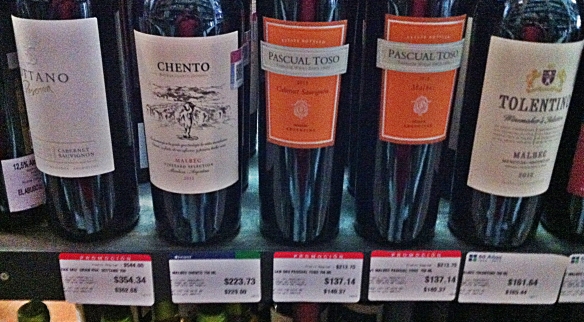
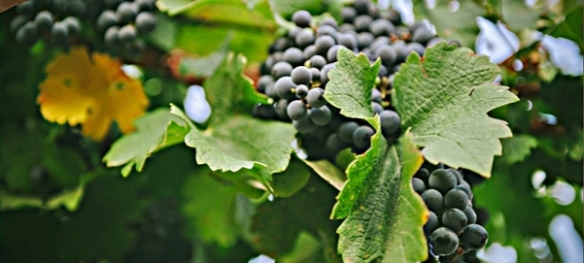
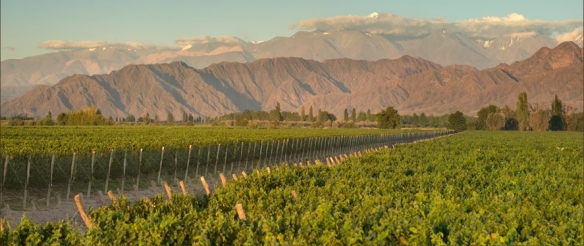
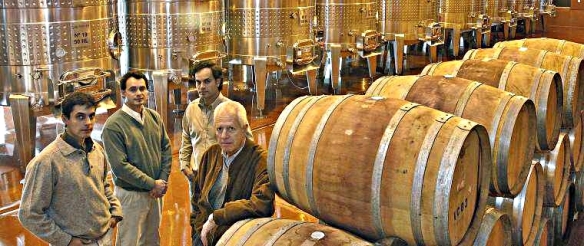
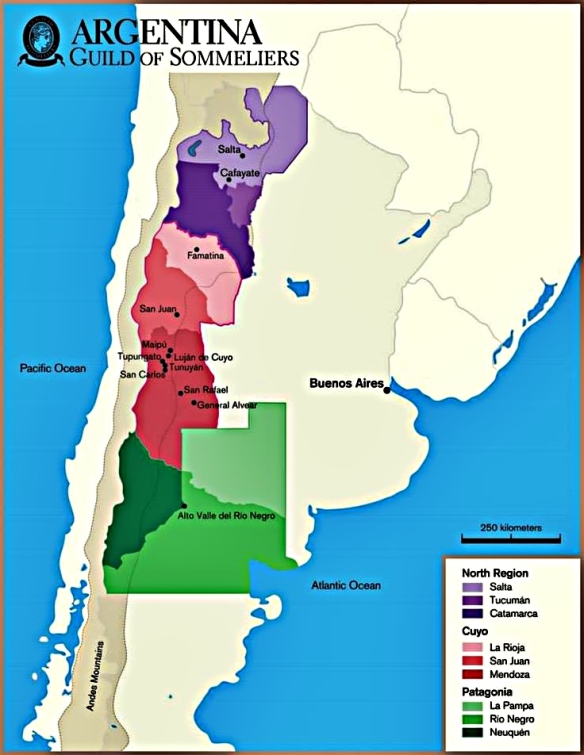


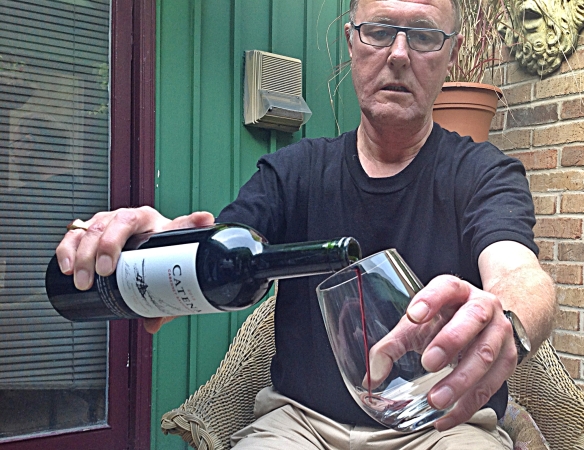
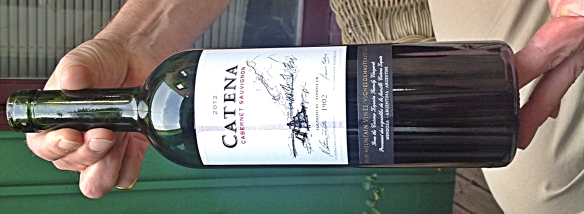
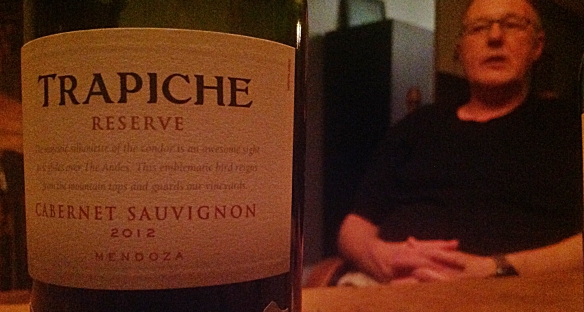
We enjoy your commentary as much as the content. Keep it up!
Sent from my iPad
>
We’ll be trying some of these soon..come join us!
Well, which one goes with Kraft Dinner? Very detailed blog post. 🙂